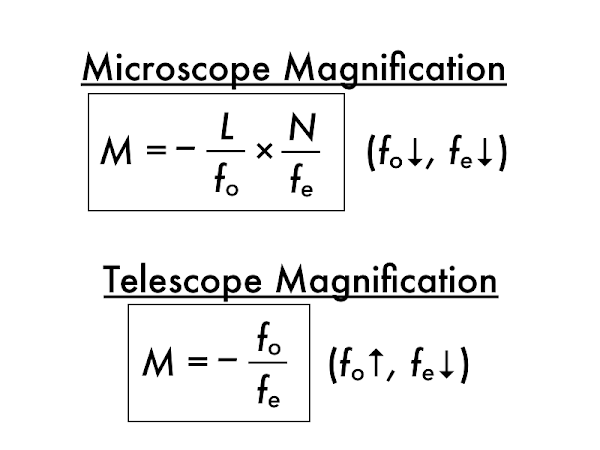Cuesta College, San Luis Obispo, CA
Students have a weekly online reading assignment (hosted by SurveyMonkey.com), where they answer questions based on reading their textbook, material covered in previous lectures, opinion questions, and/or asking (anonymous) questions or making (anonymous) comments. Full credit is given for completing the online reading assignment before next week's lecture, regardless if whether their answers are correct/incorrect. Selected results/questions/comments are addressed by the instructor at the start of the following lecture.
The following questions were asked on reading textbook chapters and previewing presentations on optical instruments and interference.

Selected/edited responses are given below.
Describe what you understand from the assigned textbook reading or presentation preview. Your description (2-3 sentences) should specifically demonstrate your level of understanding.
"I'm starting to get familiar with the lens equation. I understand that some of the problems are conceptual and just knowing the formula won't do you any good if you can't apply it."
"A microscope consists of a short tube that holds two lens apart from each other. A telescope consists of a long tube that holds two lens apart from each other. One lens is an objective lens that takes the light from the object and creates a real image."
"There are similarities between microscopes and telescopes, both being two-lens systems, the objective lens making an image and that image becoming the object for the eyepiece that you can see. However, the microscope's object is very close to the lens, whereas for the telescope it could be extremely far away (different tracings). As a result, the angular magnification is also different for both systems."
"For microscopes, barrel length is from focal length to focal length. For telescopes it is from objective lens to eyepiece lens. In phase speakers will move in and out at the same time but out of phase speakers will do the opposite and one will move in while the other moves out."
"I understood how sound waves traveling different lengths could be both destructive and constructive intereference. If the troughs line up with troughs it is constructive. If the troughs line up with the other sound wave's crest then it is destructive."
"I understand that the sound waves from a stereo system make sense intuitively. If they are out of sync, their troughs and peaks will not line up and they will in essence cancel each other out."
Describe what you found confusing from the assigned textbook reading or presentation preview. Your description (2-3 sentences) should specifically identify the concept(s) that you do not understand.
"Applying the constructive and destructive interference conditions of two waves to a problem."
"I was confused with the equations for the telescope and microscope. I was not entirely sure what each variable meant."
"The ray tracings for the microscopes and telescopes confused me."
Identify the type for each of these lenses. (Only correct responses shown.)
Microscope objective: converging [88%]
Microscope eyepiece: converging [68%]
Telescope objective: converging [68%]
Telescope eyepiece: converging [61%]


Identify the ray tracing for each of these lenses. (Only correct responses shown.)
Microscope objective: ray tracing 2 [58%]
Microscope eyepiece: ray tracing 3 or 4 [54%]
Telescope objective: ray tracing 1 [22%]
Telescope eyepiece: ray tracing 3 or 4 [46%]

A (compound) microscope should have a __________ focal length objective lens and a ___________ focal length eyepiece lens in order to maximize its angular magnification.
short; short. *********************** [23] short; long. ******** [8] long; short. ***** [5] long; long. * [1] (Unsure/lost/guessing/help!) **** [4]
A telescope should have a __________ focal length objective lens and a ___________ focal length eyepiece lens in order to maximize its angular magnification.
short; short. [0] short; long. ****** [6] long; short. ***************************** [29] long; long. ** [2] (Unsure/lost/guessing/help!) **** [4]
Identify the tube/barrel length L definitions for these optical instruments. (Only correct responses shown.)
Microscope: distance from inside focal point to inside focal point [56%]
Telescope: distance from lens to lens [63%]

1: in phase sources; whole wavelength path difference; constructive [79%]
2: in phase sources; half wavelength path difference; destructive [38%]
3: in phase sources; whole wavelength path difference; constructive [49%]
4: out of phase sources; whole wavelength path difference; destructive [51%]
5: out of phase sources; half wavelength path difference; constructive [54%]
6: out of phase sources; whole wavelength path difference; destructive [59%]
Ask the instructor an anonymous question, or make a comment. Selected questions/comments may be discussed in class.
"I can't believe we are already starting the sixth week of the semester. Where does all the time go? Pretty soon I won't be in physics anymore:-)." (Yeah, I'm beginning to miss you guys already, too.)
"I need an intervention. I need it."
"I just noticed each group quiz is worth less points, and the maximum for this semester is also less, compared to last semester. What's up with that?" (I am altering the deal. Pray I don't alter it any further. #fearleadstoanger #angerleadstohate #hateleadstosuffering.)
"Does it matter if the speakers are connected out of phase? If they move in opposing motions will there still be no sound?" (Yes, ideally the two sounds from each speaker will cancel each other out, if there is no difference in path. This is the principle behind noise-cancelling earphones, where an external microphone detects ambient noise, and drives a speaker with the opposite phase to cancel out the ambient noise as it travels into your ear, leaving all others sounds intact.)
No comments:
Post a Comment